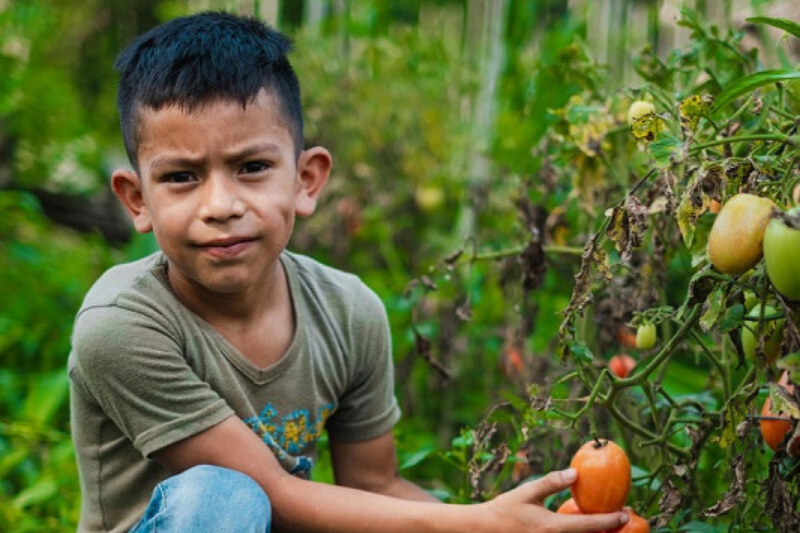Food Prices Continue to Rise in Poorest Countries
- Nine of the top ten countries experiencing the highest food prices compared to average wages are concentrated in sub-Saharan Africa where many experience protracted violent conflicts, climate extremes, and displacement.
- Of the five countries with historical data where food prices are the highest, none have seen any improvement in food prices since 2022 - all require more than a full week of work to afford a basic food basket.
A food basket of 10 common food items costs:
- 1.5 hours of work in Australia compared to 36 days in Burundi
- 2 hours of work in Canada compared to 25.5 days in the Central African Republic (CAR)
- 1.5 hours of work in Ireland compared to 14 days in Sudan
- 1.5 hours of work in Singapore compared to 4.5 days in Cambodia
- 2 hours of work in the US compared to 5.5 days in Haiti
- 2.5 hours of work in Germany compared to 3 days in Kenya
- 2 hours of work in the UK compared to 3.5 days in Timor-Leste
- 3 hours of work in New Zealand compared to 1.5 days in Ukraine
- 3 hours of work in Switzerland compared to 1.5 days in Ecuador
1 March 2024 – A price shocks report released today by international aid agency, World Vision reveals that for the most vulnerable, food prices are still higher than they were before the COVID-19 pandemic.
Prices have continued to rise in the poorest countries, particularly those affected by violent conflict, climate extremes, and forced displacement. Analysis of food prices from September 2023 shows that a food basket that would cost 1.5 hours of work in Australia, Ireland, or Singapore would take the average worker 36 days to earn the money to purchase in Burundi and 25 days in the Central African Republic.
Mary Njeri, World Vision’s Global Hunger Response Director, said, "This data underlines the alarming food crises that have left 35 million people experiencing emergency hunger conditions. The economic turmoil caused by COVID-19 and the war in Ukraine, alongside intensifying effects of climate change and other conflicts, are leaving the most vulnerable people least able to afford the cost of a basic food basket. Chicken, eggs and milk should not be considered luxuries, but something that everyone is able to buy to have a balanced diet.”
Ongoing conflicts in many countries are also leading to localised price spikes. For instance, in Burkina Faso and Sudan, areas experiencing conflict had prices up to two times higher than areas that have been less affected by violence. Many of these countries are also some of the worst affected by the effects of climate change, further aggravating tensions as families struggle to feed themselves or find somewhere safe to live and farm.
“In 2024, families desperately need peace above all else, and the international community must step up to ensure that no child is going hungry. Just one-tenth of the estimated US$39−50 billion needed annually to avoid 3.7 million deaths of children under age 5 has been put towards interventions to achieve these goals since 2015. In contrast, Americans spent 2.5 times that amount (US$9.8 billion) on holiday shopping in just one day in 2023. Children exposed to conflict and hunger are more likely to be forced into child marriage or child labour as they desperately seek a safe place to sleep and enough food to eat each day. As we start a new year, this is no future for our children.”
About the report (Download the Report here)
This research uses field data from a total of 67 countries where World Vision works, as well as historical data from the same price survey in 2021 and 2022 to make comparisons for 24 countries. Price surveys looked at local food prices for 10 common food items (including one kilogram (kg) each of sweet bananas, white uncooked rice, wheat flour, raw sugar, maize corn cobs, and tomatoes; one raw chicken; one dozen (12) eggs; one litre each of cooking oil; and fresh, locally sourced milk.
To compare amounts across countries, food prices were converted to US$ using current currency exchange rates on the date when the data was collected. These US$ values were then converted using the average PPP conversion over the year. The PPP conversion rates for each country were calculated using the ratio of Nominal GNI per capita and PPP GNI per capita. Results are rounded to the nearest half hour and assume an eight-hour workday and a 48-hour workweek. Of the participating countries, five did not have reliable GNI (Afghanistan, South Sudan, the Syrian Arab Republic, Venezuela, and Yemen), so their food baskets are not available in US$ or included in the analysis of how many hours of work it would take to purchase these items.
The 10 countries where a food basket costs the most in terms of hours worked are Burundi (36 days), CAR (25.5 days), DRC (almost 16 days), Sudan (14 days), Mozambique (almost 14 days), Malawi (almost 14 days), Ethiopia (12 days), Burkina Faso (almost 11 days), Niger (9 days), Guatemala (9 days).
The five countries with historical data where food prices are highest in US$ are Sudan ($159.20), Ethiopia ($92.43), Burundi ($82.93), Sri Lanka ($75.41) and Philippines ($57.69).









